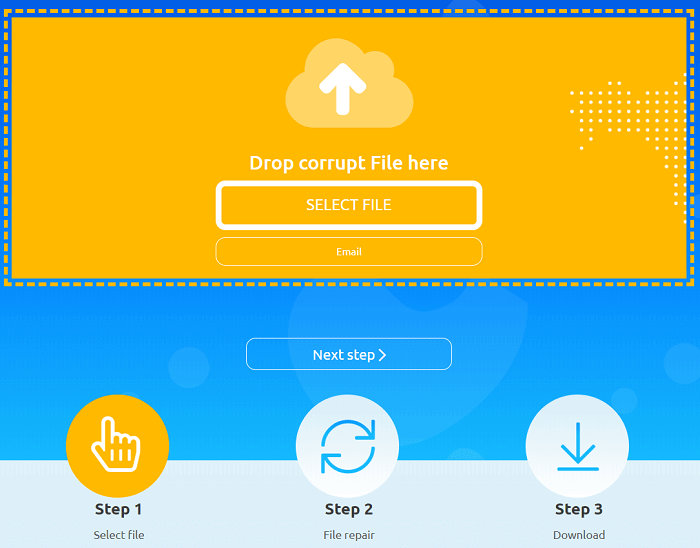XML Repair| How to Repair/Recover Corrupted XML Files
Overview of XML File Repair/Recovery
You're experiencing an issue with your 16GB SanDisk USB flash drive, which contains important XML files. Windows is prompting you to format the drive, but this would erase your files. To recover or repair your XML files, you might consider using a data recovery software like Recuva or EaseUS Data Recovery Wizard. These tools can scan the drive and attempt to retrieve your files. If the drive is still recognized by Windows, you can also try using the built-in Check Disk utility (chkdsk) to see if it can repair any issues. If the drive is completely unresponsive, you might need to seek professional help or contact SanDisk support for further assistance.
If you've lost your XML files and are experiencing issues, the most effective way to troubleshoot is to utilize a reliable file repair software for assistance.
| Workable Solutions | Step-by-step Troubleshooting |
|---|---|
| Repair XML File |
|
| Recover XML File |
Step1. Run Deep Data Recovery Step2. Scan the lost files Step3. Preview and restore files...Full steps |
You can repair and recover corrupted XML files in Windows 11/10/8/7 by simply keeping reading.
How to Repair Corrupted XML Files (2 Methods)
Before trying a file repair tool, run quick fixes first.
- Open the corrupted XML file in Internet Explorer, note any error messages, and close the browser after identifying the issue.
- To open and identify corrupted file errors, simply open the file in a text editor like Notepad, then navigate to the "View" menu and select "Status Bar" to locate the line and column with errors.
- The text should be rewritten to remove any line breaks in the middle of tags and any illegal characters between tag pairs. This means that any instance of `
line break ` should be changed to ` line break `. - Fix errors in XML files and continually check in the browser until no error occurs, allowing the corrupted XML to be opened.
Method 1. Fix Corrupted XML Files Online
OnlineFile.Repair offers a simple solution to recover corrupted documents and files. By uploading the affected files, clicking the repair option, and downloading the recovered ones, users can easily retrieve their lost data.

Method 2. Run a File Repair Software
If your XML file is too large, consider using file repair software to fix it. Deep Data Recovery can repair corrupt, damaged, and broken files, including XML. To repair corrupted XML files, follow these steps: [insert steps].
Step 1.Launch Deep Data Recovery, select the file types you want to recover, and click "Next" to begin the recovery process.

Step 2.To repair corrupted files, select a disk location where the damaged files are saved and click "Scan" to start the repair process. Qiling file repair tool can fix broken documents, videos, and pictures in various formats.

Step 3.After scanning, you can quickly identify corrupt data by file type. To repair specific types of files, such as Word, Excel, or PDF documents, select the corresponding category and filter by type. For image and video files, the software supports a wide range of common formats, including JPEG, PNG, BMP, MOV, MP4, GIF, and more.

Step 4.Qiling file repair software automatically fixes broken files, allowing you to preview the repaired files before recovery. To complete the process, click "Recover" and save the recovered files to a different location to avoid data overwriting.
How to Recover Corrupted XML Files
To recover deleted, formatted, or corrupted XML files on a Windows computer, you can use Qiling data recovery software, which also supports recovery of various other file types such as Word documents, XLS/XLSX, PPT/PPTX, PDF, and more.
Step 1. Launch Qiling file recovery software on your Windows computer. Select file types and click "Next" to start the recovery process.

Step 2. Click the "Restore" button to recover the lost files. If you can't find the files, click the "Search" button to look for them in other locations.

Step 3. Once the software is started, it will immediately begin scanning the drive, displaying deleted files soon. If the desired files are found during the scan, it can be stopped. To quickly locate the target file, the file format filter can be used.

Step 4. Select files such as Word, Excel, PDF, photos, videos, or emails and click the "Recover" button, then you can browse for a different location to keep the recovered files.
Conclusion
Whenever you need to restore and repair XML files from Windows 11/10/8/7, you can get help in this post. Qiling is also good at repairing Excel, Word, MP4, video, and more files, aside from XML repair. Download this helpful tool to recover corrupted files.
XML Repair FAQs
If you are still bothered with file repair, you can read the questions and answers below to get additional help.
1. What does XML error mean?
The XML error typically indicates a problem finding the document, either because it doesn't exist or there's an issue with permissions, or there's an error in the schema itself.
2. What file is XML?
An XML file, or extensible markup language file, is used to structure data for storage and transport. It contains both tags and text, where the tags provide the structure and the text is surrounded by them, following specific syntax guidelines.
3. What is the XML file used for?
An XML file is a type of file that stores data in a hierarchical format using custom tags, making it easily readable by computer programs.
Related Articles
- Left-Click Mouse Causes Deletion in Windows 10/8/7 [Solved]
- 2 Ways to Recover Deleted or Lost Saved Game Files on Xbox One
- How to Fix 'Can't View Pictures on SD card in Camera or Computer'
- How to Recover Corrupted Files from a USB Flash Drive